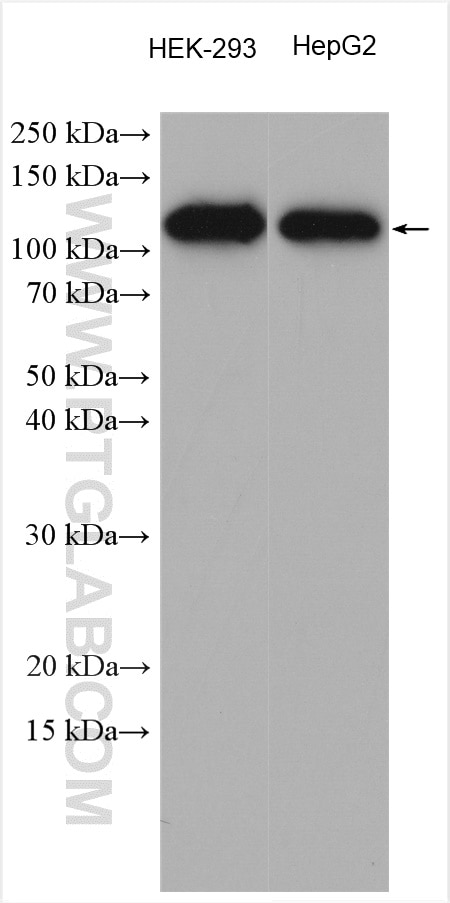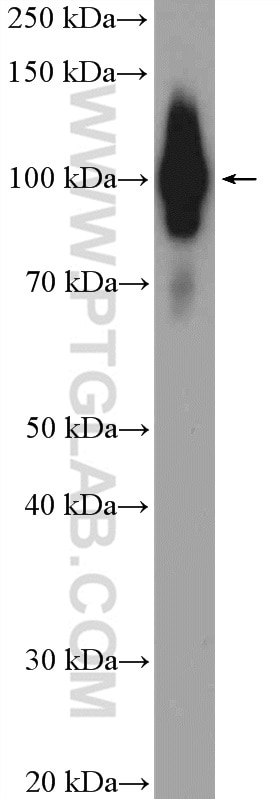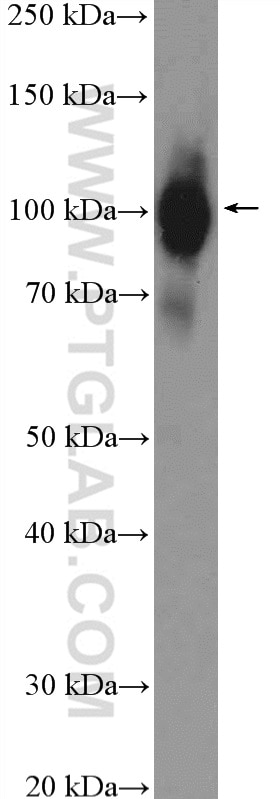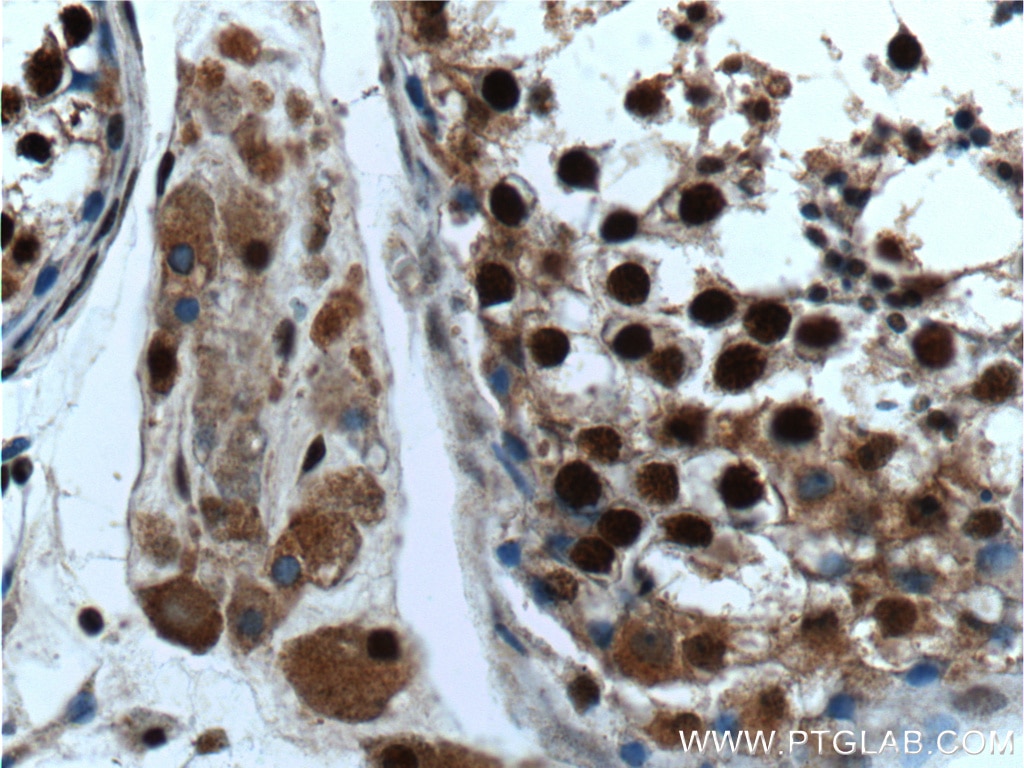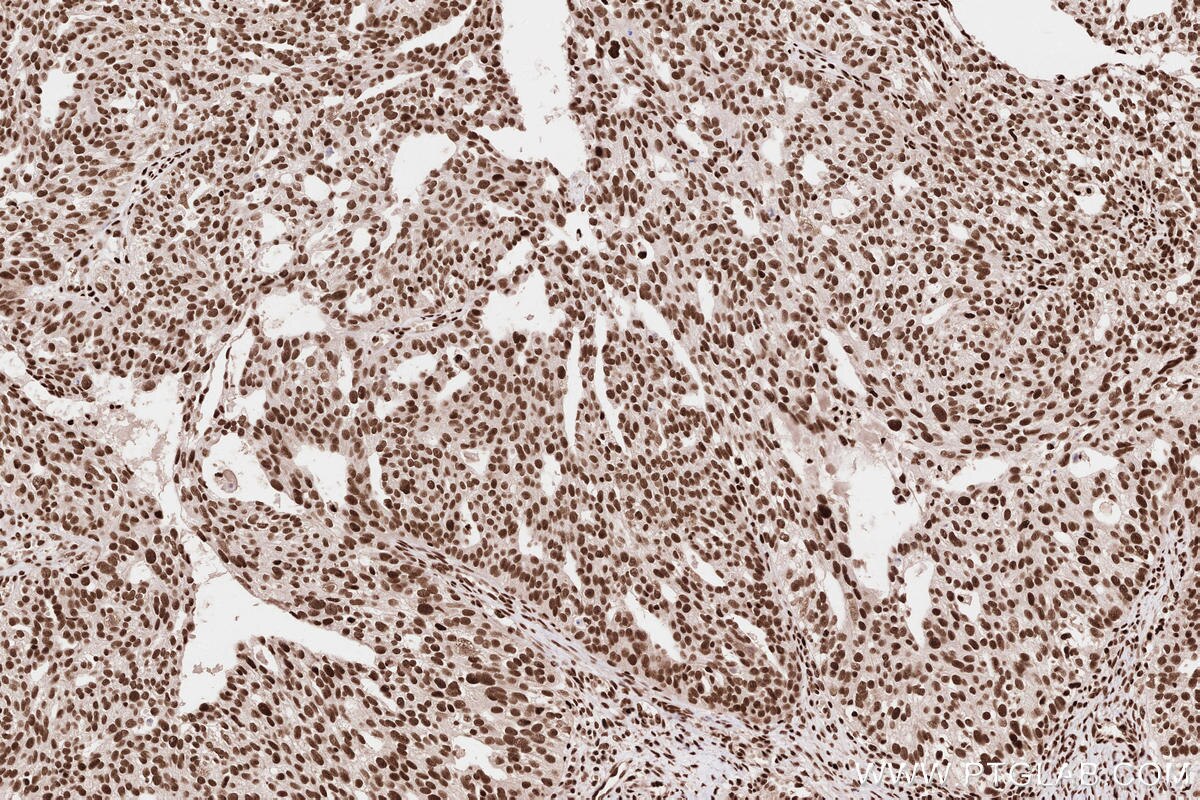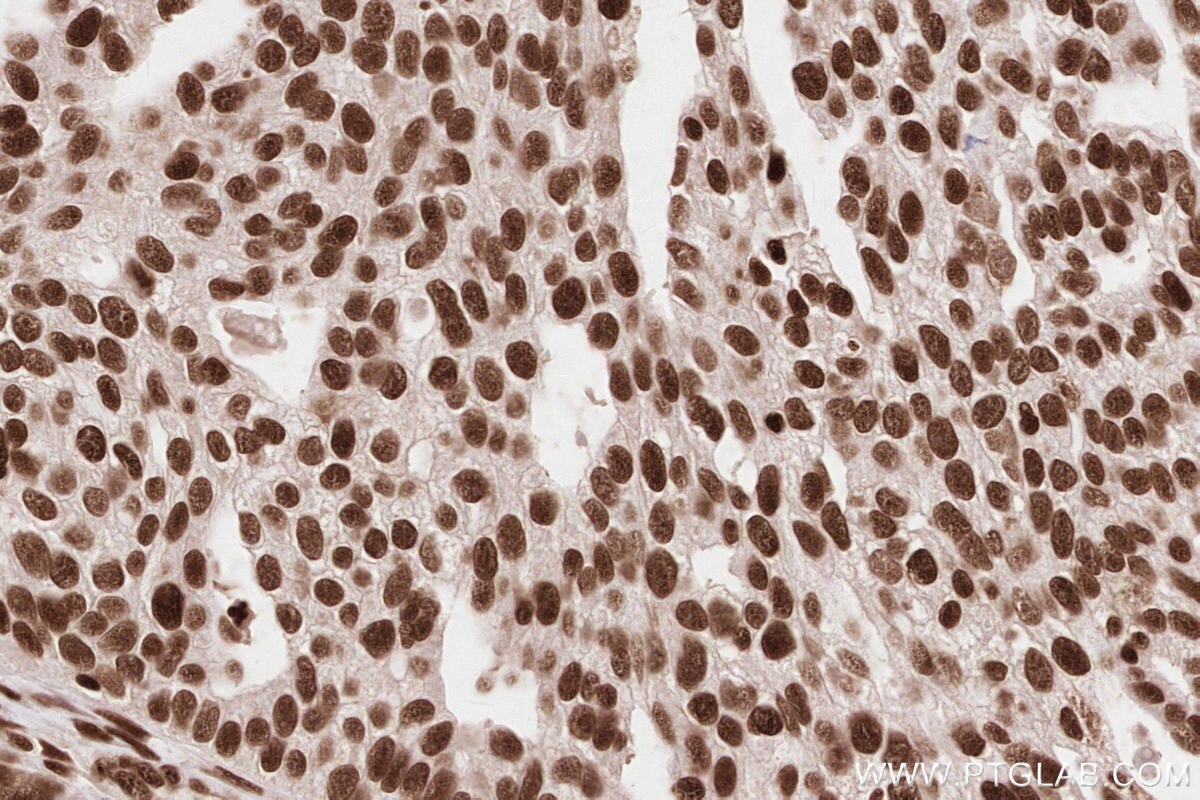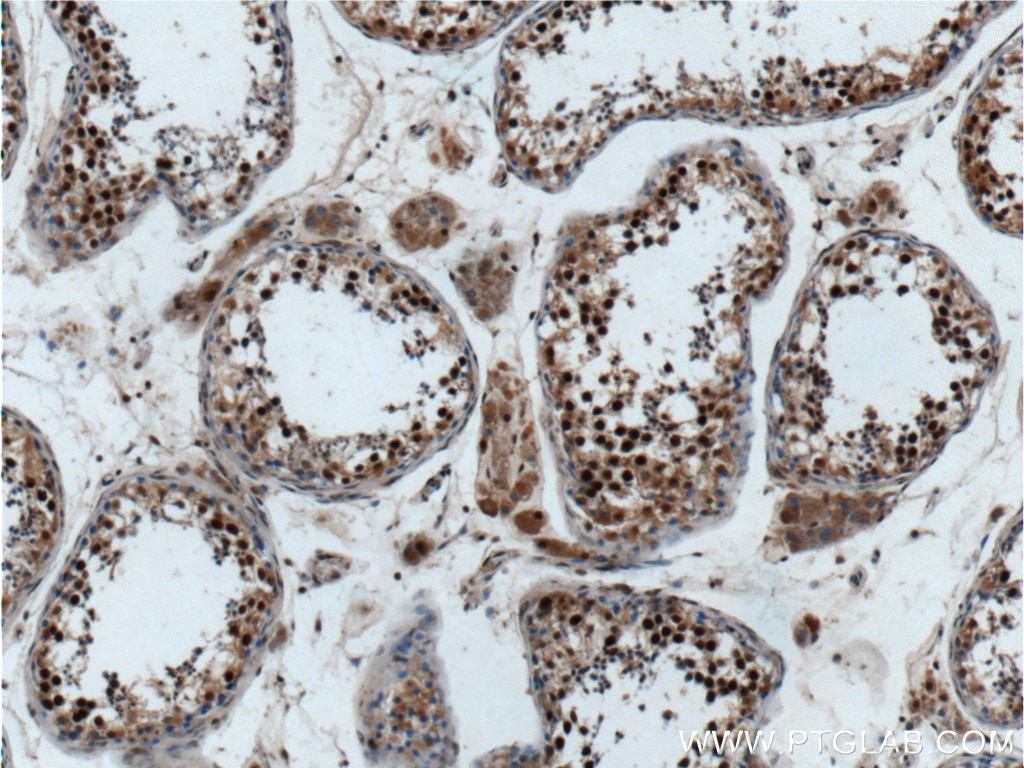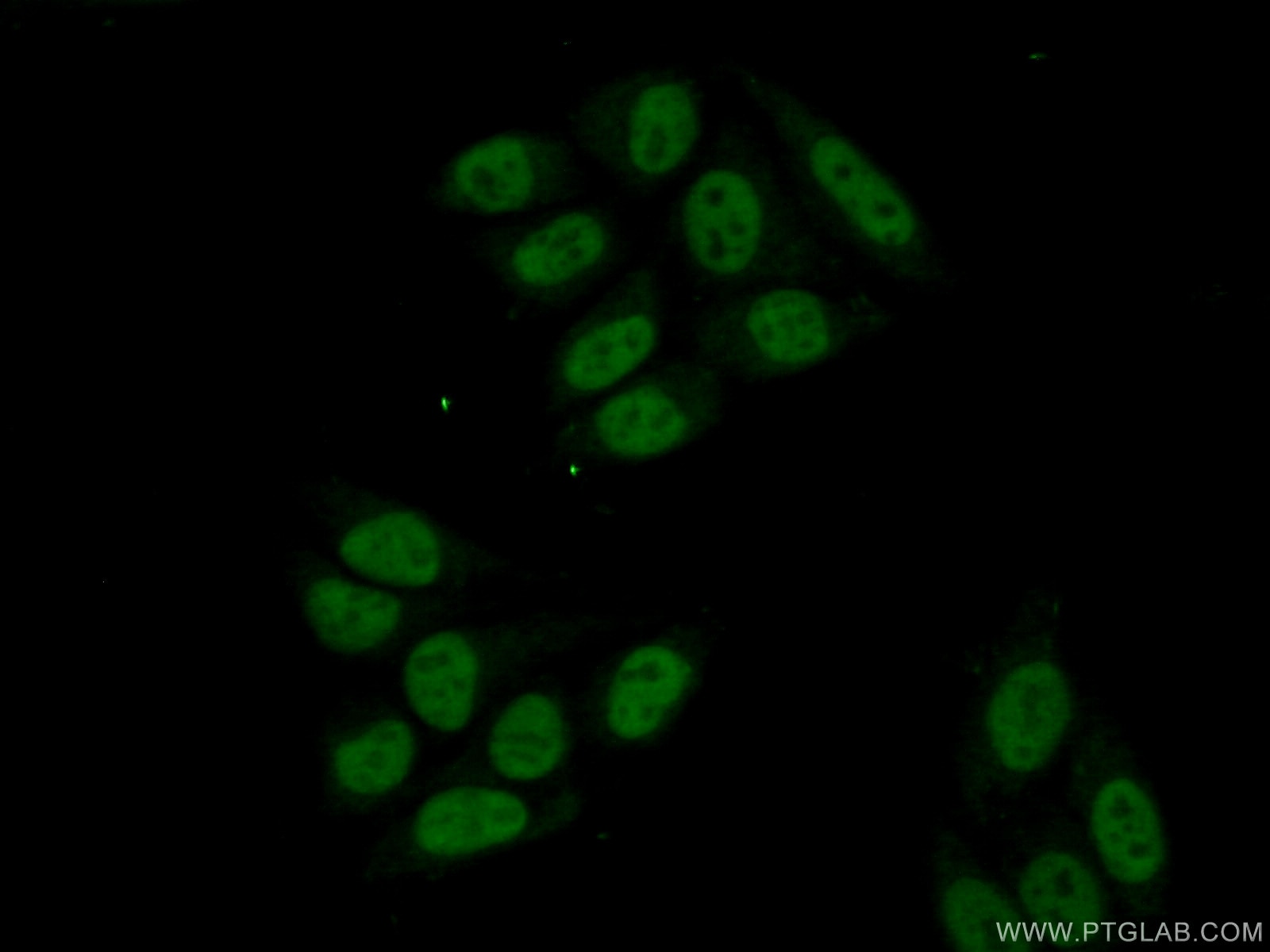- Phare
- Validé par KD/KO
Anticorps Polyclonal de lapin anti-ZCCHC8
ZCCHC8 Polyclonal Antibody for WB, IHC, IF/ICC, ELISA
Hôte / Isotype
Lapin / IgG
Réactivité testée
Humain, souris
Applications
WB, IHC, IF/ICC, IP, CoIP, ELISA
Conjugaison
Non conjugué
N° de cat : 23374-1-AP
Synonymes
Galerie de données de validation
Applications testées
| Résultats positifs en WB | cellules HEK-293, cellules HepG2, tissu de thymus de souris |
| Résultats positifs en IHC | tissu testiculaire humain, il est suggéré de démasquer l'antigène avec un tampon de TE buffer pH 9.0; (*) À défaut, 'le démasquage de l'antigène peut être 'effectué avec un tampon citrate pH 6,0. |
| Résultats positifs en IF/ICC | cellules HepG2 |
Dilution recommandée
| Application | Dilution |
|---|---|
| Western Blot (WB) | WB : 1:2000-1:12000 |
| Immunohistochimie (IHC) | IHC : 1:50-1:500 |
| Immunofluorescence (IF)/ICC | IF/ICC : 1:50-1:500 |
| It is recommended that this reagent should be titrated in each testing system to obtain optimal results. | |
| Sample-dependent, check data in validation data gallery | |
Applications publiées
| KD/KO | See 5 publications below |
| WB | See 7 publications below |
| IP | See 1 publications below |
| CoIP | See 1 publications below |
Informations sur le produit
23374-1-AP cible ZCCHC8 dans les applications de WB, IHC, IF/ICC, IP, CoIP, ELISA et montre une réactivité avec des échantillons Humain, souris
| Réactivité | Humain, souris |
| Réactivité citée | Humain, souris |
| Hôte / Isotype | Lapin / IgG |
| Clonalité | Polyclonal |
| Type | Anticorps |
| Immunogène | ZCCHC8 Protéine recombinante Ag19985 |
| Nom complet | zinc finger, CCHC domain containing 8 |
| Masse moléculaire calculée | 707 aa, 79 kDa |
| Poids moléculaire observé | 90-100 kDa |
| Numéro d’acquisition GenBank | BC065918 |
| Symbole du gène | ZCCHC8 |
| Identification du gène (NCBI) | 55596 |
| Conjugaison | Non conjugué |
| Forme | Liquide |
| Méthode de purification | Purification par affinité contre l'antigène |
| Tampon de stockage | PBS with 0.02% sodium azide and 50% glycerol |
| Conditions de stockage | Stocker à -20°C. Stable pendant un an après l'expédition. L'aliquotage n'est pas nécessaire pour le stockage à -20oC Les 20ul contiennent 0,1% de BSA. |
Informations générales
The eukaryotic RNA exosome participates extensively in RNA processing and degradation. In human cells, three accessory factors (RBM7, ZCCHC8 and hMTR4) interact to form the nuclear exosome targeting (NEXT) complex, which directs a subset of non-coding RNAs for exosomal degradation. ZCCHC8 acts as a scaffold, mediating the interaction between RBM7 and MTR4. NEXT is involved in exosome-mediated surveillance and decay of noncoding RNAs, such as enhancer RNAs (eRNAs) and aberrant 3′-extended transcripts from small nuclear RNA (snRNA), telomerase RNA, and replication-dependent histone genes. NEXT is an important node in regulating nuclear exosome activities and takes part in several biological processes, including DNA damage response, stress response, and viral ribogenesis . ZCCHC8 also has a robust interaction with YTHDC1 (PMID: 28984244).
Protocole
| Product Specific Protocols | |
|---|---|
| WB protocol for ZCCHC8 antibody 23374-1-AP | Download protocol |
| IHC protocol for ZCCHC8 antibody 23374-1-AP | Download protocol |
| IF protocol for ZCCHC8 antibody 23374-1-AP | Download protocol |
| Standard Protocols | |
|---|---|
| Click here to view our Standard Protocols |
Publications
| Species | Application | Title |
|---|---|---|
Mol Cell Nuclear RNA catabolism controls endogenous retroviruses, gene expression asymmetry, and dedifferentiation
| ||
Nucleic Acids Res mRNAs are sorted for export or degradation before passing through nuclear speckles. | ||
Nucleic Acids Res Concurrent binding to DNA and RNA facilitates the pluripotency reprogramming activity of Sox2. | ||
Cell Rep Nuclear Exosome Targeting Complex Core Factor Zcchc8 Regulates the Degradation of LINE1 RNA in Early Embryos and Embryonic Stem Cells.
| ||
Nat Neurosci Globally reduced N6-methyladenosine (m6A) in C9ORF72-ALS/FTD dysregulates RNA metabolism and contributes to neurodegeneration
| ||
PLoS Genet RBMX involves in telomere stability maintenance by regulating TERRA expression |
Avis
The reviews below have been submitted by verified Proteintech customers who received an incentive for providing their feedback.
FH Fabienne (Verified Customer) (05-09-2025) | Perfect for detecting ZCCHC8 by western blot. Tested on nuclear cell extracts
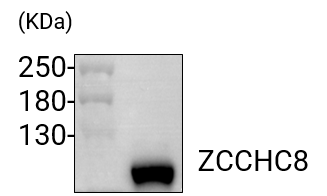 |
FH Tsimafei (Verified Customer) (04-22-2025) | Great antibody for Zcchc8 detection in mESCs
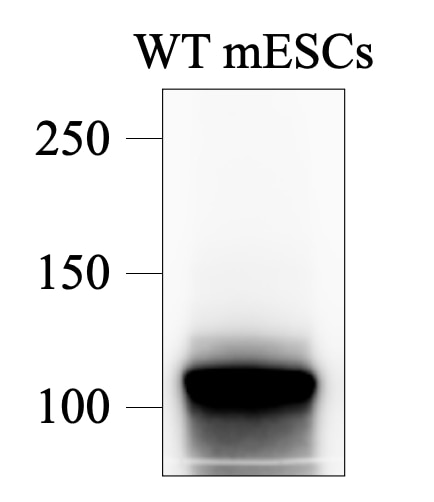 |
FH Moritz (Verified Customer) (08-20-2024) | I used this antibody to detect ZCCHC8 in HEK293T WT cell lysate on Western blot, which worked perfectly. The signal was very specific, no unspecific bands were detectable.
|
FH Roy (Verified Customer) (06-15-2024) | Perfect for detecting the NEXT complex component ZCCHC8 by WB (1h incubation at room temperature, 1/1000 dilution)
|
